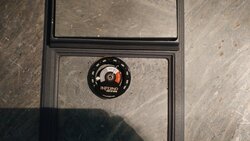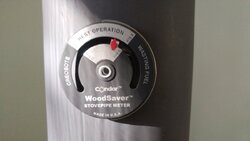Hello all I just started burning with my avalon pedelton. I'm new to woodburning in general. I have had a few fires now and have been playing with settings. I cant seem to get a good low setting with any secondary burn. I get it set and have a nice burn on them and then a minute or two it goes out. If I give it more air it just burns normal with no secondary flames. All the inside parts are ew kawool blanket,baffle, air tube and fire bricks. What and I doing wrong?
Secondary burn help
- Thread starter Welderman85
- Start date
-
Active since 1995, Hearth.com is THE place on the internet for free information and advice about wood stoves, pellet stoves and other energy saving equipment.
We strive to provide opinions, articles, discussions and history related to Hearth Products and in a more general sense, energy issues.
We promote the EFFICIENT, RESPONSIBLE, CLEAN and SAFE use of all fuels, whether renewable or fossil.



